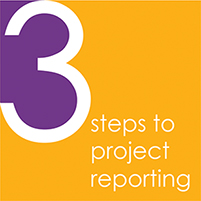One of the single biggest benefits of implementing a Project Portfolio Management (PPM) application, is the software’s ability to publish real time status reports. Yet, to achieve credible and quality reporting is a challenge and, typically, some PPM implementations fall short of ever achieving this.
Guy Jelley, CEO at Project Portfolio Office, explains that one of the advantages of a PPM application is its ability to report at a portfolio, programme and project level to the entire organisation, irrespective of your focus.
“PPM applications are designed to provide reporting to the entire organisation, regardless of its focus and should provide reporting on individual business units, products, brands, strategic objectives, new initiatives and so on. However, for the application to publish quality and credible executive status reports remains a challenge if the actual users of the application neglect to adopt and use it on an ongoing basis,” he says.
To ensure that executives’ dashboards and reports offer a true reflection of the current status of projects, programmes and portfolios, Jelley recommends that companies follow three steps.
Step 1: Make sure all projects are captured in the PPM application.
“A common mistake is leaving out existing or ongoing projects, as this results in never achieving the full portfolio view. A good rule to follow is to include all active, proposed and ‘on hold’ projects – large, small, healthy and not healthy – no exceptions. Remember though that it rarely adds value to load completed projects, unless they are to be used for learning purposes or reporting across a financial period.”
Step 2. Ensure data completeness of each captured project.
Jelley suggests that the project office should drive an internal process to ensure all information per project is loaded.
“Manage this process by creating visibility of the progress, such as measuring and recording project manager percentage of data completeness, and only approve project data completeness once the status reporting for that project has been used in progress and steering committee meetings,” he says.
He adds that although gathering the initial data is easy, the difficulty arises in making sure that the software is being actively used. “For this reason, change management is important,” he says.
Jelley explains that it is also essential to import governance and other compulsory documents too, even if completed a year ago. “You want to be guaranteed that going forward all documentation for the projects are loaded, irrespective of when the project started and when the PPM tool was implemented. In addition, remember to capture all active issues and risks, project schedule, scope changes, decisions and current status reporting.”
Step 3. Implement and maintain ongoing usage and governance processes.
“Note should be taken that once step one and two have been followed, the real work towards reliable status reporting starts. That is, from now the entire project team make use of the application at all times so that the executive status report constantly reflects factual, up to date information that can be used for strategic decision making.”
As mentioned, change management plays a substantial role in the successful adoption of this last step. Jelley shares that after deploying the company’s award winning online PPM and collaboration application, Project Portfolio Office (PPO), his team has found that some employees still make use of legacy reporting systems, typically Word and Excel, post the implementation.
“We have noticed that this is due to both habit and a fear of change. Companies that have placed a firm management focus on our software, have however completely made away with these old ‘crutches’ and put methods in place so that users utilise the system in its entirety, resulting in gaining the best value from the tool,” he says.
He adds that another common error observed by his team is either making project updates the sole responsibility of the project administrator or only giving the project manager access to the system. “It is the task of the whole project team to us it regularly, from updating issues, identifying risks and loading documents,” he says.
Lastly, he mentions that a lack of governance procedures, which ensure that requirements are constantly being met as new projects start and existing projects move, is an internal blunder that once again risks the accuracy of reporting.
“Organisations should implement this from the beginning to ensure ongoing process compliance and thus data quality.
“Project communication and status reporting is such a crucial element in project management that it cannot be overemphasised,” he says. “Quite simply, gaps in data, result in a disparate status report, which takes away from the value and effort of implementing PPM systems.”



